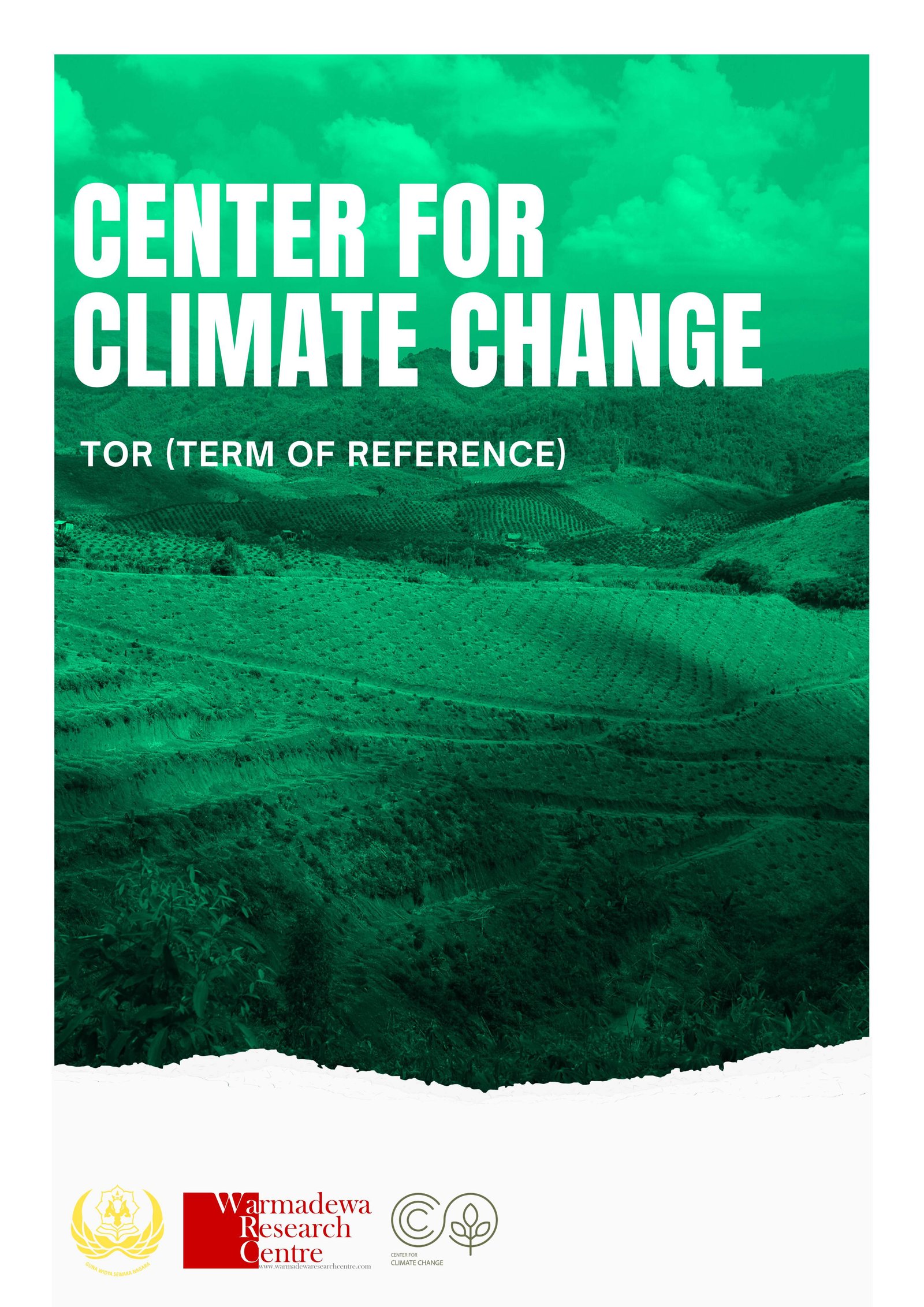Biodiversity & Ecology
Cluster Biodiversity and Ecology
What is the focus?
Global climate change has presented many threats that hurt diversity and ecology. Several biological resources are experiencing population decline and behavioral changes due to global climate change (McCarty et al. 2009). Many ecosystems are experiencing damage due to climate change, such as 40% of mangrove cover is damaged, around 71% of coral reefs are in poor condition, and it is estimated that 84-94% of biological resources in Indonesia are experiencing population decline (Zikra et al. 2015). These conditions, of course, are contrary to one of the SDGs, which aims to conserve and utilize oceans, seas, and marine resources in a sustainable manner for sustainable development.
The impact of climate change in the marine and fisheries sector has resulted in increased sea surface temperatures, increased frequency and intensity of extreme weather, changes in rainfall patterns, and freshwater runoff triggered by the El Nino and La Nina phenomena (Harley et al. 2006; Wang 2021). As a result of this phenomenon, the frequency of large waves increases, which becomes an obstacle for fishermen if they want to reach fishing grounds (Abudarda et al. 2021). Temperature changes can influence changes in plankton community structure, which results in a mismatch in ecological time related to the survival of fish juveniles, which causes a decline in fish populations. Physiologically, fisheries resources depend on environmental temperature, especially fish in tropical areas with a narrow temperature tolerance range (Brander 2010). An increase in water temperature will be responded to by changing the distribution pattern of fish to areas where the temperature is more suitable, for example, by migrating to areas at higher latitudes or deeper waters (Simpson et al. 2013). This will cause a reduction in catch species and affect the abundance and distribution of fish. Indonesia is predicted to experience a decline in potential catches of more than 20% in 2055 (Cintra et al. 2017).
An increase in sea surface temperature will result in a shift in the distribution patterns and reproductive patterns of caught fish, increasing fishing operational costs, fuel, and more appropriate fishing gear (Hollowed et al. 2013; Mazumder et al. 2015). These changes in behavioral patterns are closely related to the eco-biological aspects of fish, which include growth, reproduction, and oceanographic conditions (Nagelkerken et al. 2023). Eco-biological aspects of fish can help provide an overview of growth patterns, condition, sex ratio, size at first catch, size at first gonad maturity, peak spawning season, gonad maturity, and physical-chemical conditions of the fishing area. This information is a fundamental sequence in fisheries management based on an ecosystem approach.
Kenapa dijadikan fokus
Sustainable fisheries management has three dimensions that cannot be separated: fisheries resources and their ecosystem, utilization for the socio-economic interests of the community, and fisheries policy. Sustainable fisheries management aims to provide optimal social and economic benefits for the community while maintaining the sustainability of the fish population caught. Fisheries management is an integrated process of gathering information, analysis, planning, consultation, decision-making, resource allocation, and implementation of regulations in the fisheries sector to ensure the continuity of resource productivity and achieve other fisheries objectives. Management of fisheries resources currently demands full attention due to the increasing exploitation pressure on fish stocks in terms of increasing fishing efforts and ecological pressure originating from global climate change. So, overfishing, both in terms of population stock and biological aspects of fisheries, is increasingly inevitable.
The Novelty
Determining catch quotas, fishing areas, and catch size still needs to be implemented. The ecological and bioeconomic aspects of fisheries can be used in sustainable fisheries management to determine these three aspects.
Activity
The Bali Strait waters have contributed to the production of pelagic capture fisheries in FMA-573. The fisheries potential in the Bali Strait is very diverse, especially small pelagic fish such as frigate tuna, bullet tuna, sardines, and mackerel. The Indian Ocean Tuna Commission (2014) reported that more than 90% of the catch of tuna krai was concentrated in four countries, namely Indonesia (59%), India (14%), Sri Lanka (11%) and Iran (7%). Thus, tuna krai is an economically important fish in Indonesia, and one of its distribution areas is in the waters of the Bali Strait, especially in the south, which includes the Jimbaran, Kedonganan, Kelan, Kuta, and Nusa Penida areas. Tuna fish production in Indonesia in 2020 reached 187,272 tons. The average production of frigate tuna in Bali Strait waters reaches 29,026 tons/year. This figure is in third place in terms of the total fisheries production in the waters of the Bali Strait. The high production value of krai tuna must be managed sustainably to avoid overfishing. Therefore, the activity that will be carried out is monitoring the population of frigate tuna in the southern coastal waters of the Bali Strait using an ecological aspect approach.


